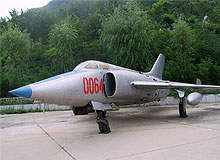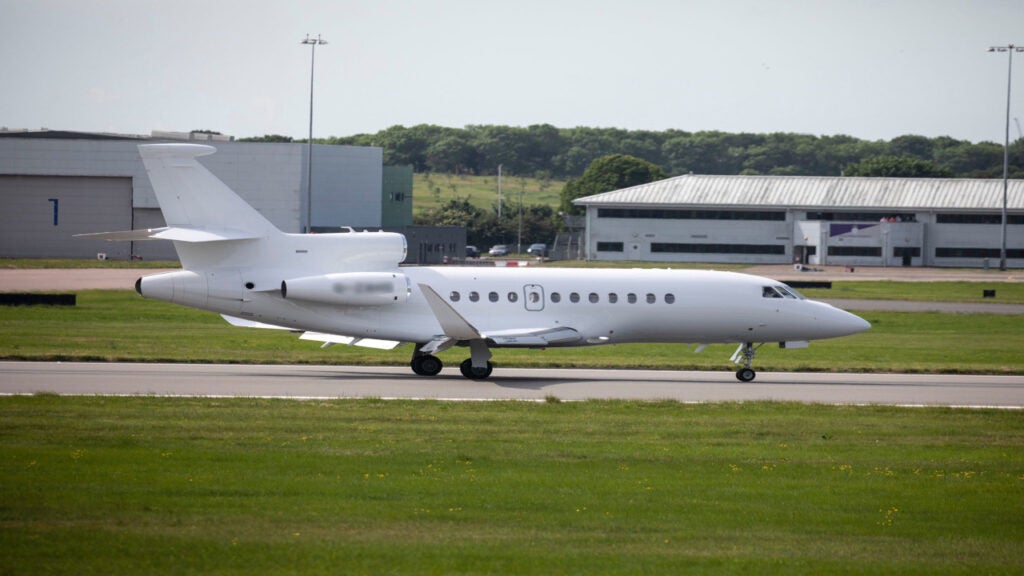
Nanchang Q-5 is a single seat, twin engine, ground attack aircraft designed and manufactured by Hongdu Aircraft Industry Group of Nanchang, China. The NATO reporting name of the aircraft is Fantan. The aircraft is derived from its predecessor MiG-19. The aircraft has been produced primarily for the People’s Liberation Army Air Force (PLAAF). Nanchang Q-5’s export version is designated as A-5. About 1000 Q-5 are currently operating worldwide.
Nanchang Q-5 variants
The Q-5 has six export and 17 domestic variants. The domestic variants of the aircraft include Q-5, Q-5A nuclear bomber, Q-5B torpedo bomber, Q-5B anti-ship missile carrier, Q-5I, Q-5IA, Q-5II, Q-5III, Q-5IV, Hongdu Q-5D, Nanchang Q-5D, Q-5E, Q-5F, Q-5J, Q-5K Kong Yun, Q-5M. The export variants are A-5, A-5B, A-5C, A-5D, A-5K, and A-5M.
The Q-5A nuclear bomber version carries nuclear weapons during wartime. It is also equipped with air-to-air missiles under each wing.
The Q-5B torpedo bomber is an improved version of Q-5A. It is fitted with two special weapon mounts which can accommodate two Yu-2 torpedoes. It is also powered by more powerful WP-6A turbojet engines. Its maiden flight took place in September 1970.
The Q-5B anti-ship missile carrier is the naval variant of Q-5. It is equipped with type 317A fire control radar in the nose.
The Q-5D is upgraded with advanced avionics, head-up display and navigation systems.
The Q-5E can release LS-500J LGB (laser guided bombs) through a targeting pod. This variant is additionally fitted with global positioning system (GPS) technology.
The Q-5F is an advance version of Q-5E incorporated with laser designator or ranger and TV cameras.
The Q-5J is a two-seat version used as a training and forward air control aircraft.
The Q-5K Kong Yun is an improved version of Q-5J, fitted with advanced western avionics systems. This variant is jointly built by France and China.
The Q-5M is an upgraded model of Q-5K. It is jointly built by China and Italy.
Development of the Q-5
The Chinese version of MiG-19, called Shenyang Jian-6 (J-6), was built by Shenyang Aircraft Corporation in 1958. Nanchang-based Hongdu Aircraft Industry Group started development of Q-5 (Qiangjiji-5) in August 1958 by modifying the J-6 aircraft. Transonic drag was decreased, air intakes to the fuselage section were transferred and new wings were added as part of the modification.
The first prototype was built in 1960. A small team in the company continued the prototype construction despite the project’s cancellation in 1961. As a result of their work, the construction programme was resumed in 1963.
The first prototype completed its maiden flight in June 1965 and the updated prototype completed its first flight in October 1969. It was introduced in 1970.
The aircraft were delivered to Pakistan, Bangladesh, Myanmar and North Korea in 1980.
The upgrade of Q-5 or A-5, with advanced western avionics, upgraded navigation and attack systems was terminated in 1989 due to Tiananmen Square protests.
Nanchang Q-5 avionics
The avionics suite of the aircraft includes a radio compass, No.45 optical sight, KJ-4 autopilot, and optical firing or bomb sight. The radio altimeter installed in the aircraft displays the altitude at which the aircraft is cruising. A marker beacon receiver fitted in the cockpit identifies the aircraft’s position on a specified route. It is also fitted with Doppler navigation radar, which detects the armaments carried by enemies.
Rear warning receiver, GPS, traffic alert, collision avoidance system, head-up display, chaff / flare dispensers, identification friend or foe, R550 Magic or AIM-9 sidewinder, and ultra high frequency radio also form parts of the avionics suite.
Armaments
The Q-5 or A-5 is armed with two 23mm type 23-2K cannons, which carry 100 rounds per gun. The aircraft has 10 hard-points of which four are located under the fuselage section and six under the wings. It can accommodate 2,000kg of explosives payload.
The Q-5 is also fitted with PL-2, PL-5, PL-7 air-to-air missiles (AAM), unguided bombs weighing 50 to 500kg, BL755 cluster bombs and matra durandal anti-runway bombs. The rocket pods installed in the aircraft are of 57mm, 90mm and 130mm dimensions.
Engines
The Q-5 is powered by two Shenyang WP-6 turbojet engines. Each engine produces 25.5kN of dry thrust and its thrust after burner is 31.87kN.
Performance
The Q-5 can climb at a rate of 103m/s. The maximum and cruise speed of the aircraft are 1210km/h and 910km/h respectively. Its range is 2000km. The service ceiling of the Q-5 is 16,000m. The aircraft weighs around 6,375kg and its maximum take-off weight is 11,830kg.




